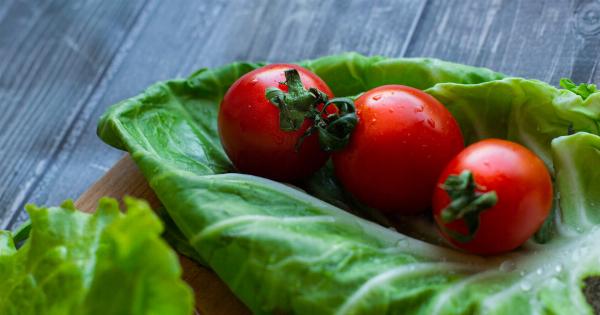The Lenten season is a time of reflection and spiritual growth for many Christians around the world. It’s a time to give up something that you cherish and make a sacrifice for the greater good.
For some, this involves giving up certain foods and beverages during the Lenten season.
While giving up certain foods during Lent can be challenging, it presents a great opportunity to try new recipes and explore different cuisines.
If you’re struggling to find inspiration for your Lenten meals, here are some tips and tricks to help you plan your meals more effectively.
1. Start with a Plan
Before you start shopping for Lenten meals, take the time to create a plan. Decide what you want to eat during the week and make a list of the ingredients you’ll need. This will help you avoid impulsive purchases and prevent food waste.
When planning your meals, consider the types of foods that are appropriate for the Lenten season. This might include fish, vegetables, fruits, and grains. Plan to include a variety of flavors and textures to keep your meals interesting.
2. Swap Meat for Vegetarian or Fish-based Alternatives
One of the most common ways to observe the Lenten season is to give up meat. This can be quite challenging for some people who are used to eating meat every day.
However, there are plenty of delicious vegetarian and fish-based alternatives that you can try.
For example, you can swap beef burgers for grilled portobello mushrooms or tuna salad. You can also try vegetarian chili, lentil soup, or hearty salads made with quinoa or brown rice.
These meals will give you the protein, fiber, and nutrients you need to stay healthy throughout the Lenten season.
3. Make Large Batches of Meals
One of the best ways to save time and money during the Lenten season is to make large batches of meals. This will allow you to cook once and eat several times. You can also freeze leftovers for another day.
When making large batches of meals, choose meals that are easy to prepare and can be reheated quickly. Casseroles, stews, and soups are all great options that can be prepared in advance and stored in the refrigerator or freezer.
4. Try One New Recipe Each Week
The Lenten season is a great time to try new recipes and explore different cuisines. Challenge yourself to try one new recipe each week. This will help you expand your culinary skills and keep your meals interesting.
When choosing new recipes, consider the ingredients you have on hand and the amount of time you have to prepare the meal. Try to choose recipes that are in line with your dietary restrictions and that are appropriate for the Lenten season.
5. Use Leftovers to Create New Meals
If you have leftover ingredients or meals, don’t let them go to waste. Instead, use them to create new meals. For example, you can turn leftover roasted vegetables into a frittata or use leftover cooked grains to make a hearty salad or stir-fry.
Using leftovers in this way will help you reduce food waste and save money on groceries. It’s also a great way to get more creative in the kitchen and experiment with different flavor combinations.
6. Get Creative with Herbs and Spices
If you’re used to eating meat-heavy meals, you might find that vegetarian and fish-based meals are a little more bland. However, you can easily add flavor and spice by using herbs and spices.
Experiment with different combinations of herbs and spices to see which ones complement each other. For example, lemon and dill go well with fish, while thyme and rosemary work well with roasted vegetables.
7. Don’t Forget about Breakfast and Snacks
When planning your meals for the Lenten season, don’t forget about breakfast and snacks. These meals are just as important as lunch and dinner and can help keep you energized throughout the day.
For breakfast, try making overnight oats with almond milk and fresh fruit or a vegetable omelet. For snacks, choose healthy options like fresh fruit, vegetable sticks, or roasted nuts.
8. Shop at Your Local Farmer’s Market
If you want to eat healthy and sustainable foods during the Lenten season, consider shopping at your local farmer’s market.
These markets offer fresh, locally grown produce that is usually less expensive than what you would find at a grocery store.
Shopping at a farmer’s market also supports local farmers and helps reduce your carbon footprint. It’s a great way to make a positive impact on your community while eating healthy and delicious foods.
9. Prep Your Meals in Advance
One of the biggest challenges of meal planning is finding the time to prepare meals. However, you can save time by prepping your meals in advance.
On a Sunday, for example, you can prepare and cook a large batch of quinoa or brown rice. You can then use this as a base for your meals throughout the week. You can also chop vegetables, make a salad dressing, or marinate meat and fish in advance.
10. Don’t Be Too Hard on Yourself
Finally, don’t be too hard on yourself if your Lenten meal planning doesn’t always go according to plan. Life can be unpredictable, and it’s important to be flexible and adaptable.
If you don’t have the time or energy to meal prep one week, don’t stress about it. Instead, focus on making healthy choices and being mindful about what you eat. Remember, the Lenten season is about making a sacrifice and growing spiritually.





























